The style of lingeries has undoubtedly changed over the years. From the beginning, lingerie was associated with wearing many layers. Towards the end of the twenties, women could only wear what we call the classic lingerie: bra and knickers today. What an interesting revelation! Back in the early twenties, women would wear a corset, corset covers, petticoats underneath her dress paired with a nightgown. There were many layers to consider when putting on a nightgown.
Fabric included cotton, silk, and other materials that were prominent during those times. For middle-class choices, artificial silk, called rayon, was an ideal option when considering the materials to utilize. The quality was reflected in the prices of the lingerie. Depending on the outfits they showed up with, this was a mark of the societal hierarchy. Even something as valuable and precious as lingeries were considered an element that dictated one’s social hierarchy.
Women were told that the more expensive the lingerie was, the better quality and more durable the lingerie were. It would also technically fit better, due to the enhancement in the quality of the more expensive pairings. The usual materials that were worn were usually of these kinds stated below:
- Rayon was artificial silk. It was usually mixed with other breeds of fiber that will present the best of both worlds.
It is easy to transform into different colors from the white version, so there was a range of colors that were introduced besides white. Black was rare but a good option for evening wear. Rayon was considered hygienic (as hygiene was a core concern of women in the roaring twenties). Comparing it to the social context, we can delve deeper into comparisons with different pieces of clothing. For instance, gloves were used during the roaring twenties as a necessity. As the twenties were also an era filled with unknown diseases, it was also difficult to find access to healthcare.
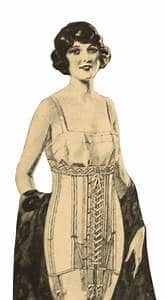
However, upper classes feared the possibility of catching such diseases, hence, resorting to vintage gloves for protection. They wore it in the public as well as in households sometimes – while cleaning. In the second half of the roaring twenties, patterns and decorations were incorporated more extensively – embroidery, ribbon flowers, lace, etc.
The roaring twenties was a golden era of fashion: it was the epitome of the new modern age fashion. As a result of WW1, women were left with a comfortable lifestyle. Their sense of fashion was reflected where young women outnumbered the older Edwardian generation. 1920s fashion made a statement that resembled their spirited and youthful style of living: it was made for the youth. 1920s women embraced their carefree and lively manner which is easily represented by their choice of clothing. As a result, this enabled them to pursue new identities and opened new doors for the rise of women’s rights.
CORSETS
People still wore corsets in the 1920s and throughout the few decades as follows. Interestingly, the majority of women still wear corsets today. Older women preferred the traditional laced-up corsets. It was more popular with curvy and bigger-sized women than thin women – it helps to accentuate their curves and enhances the shape of their bodies. Between the roaring twenties, however, the market for corset plummeted but corset makers quickly shifted the purpose of corsets to complement the new fashion.
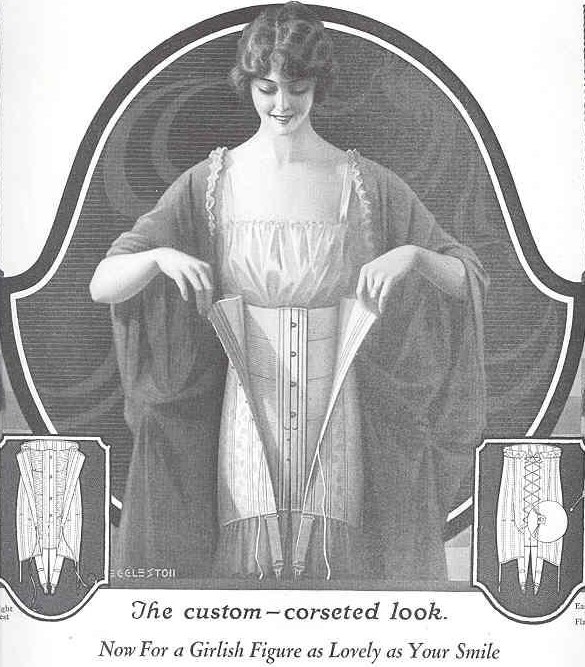
The sole purpose of corsets was to flatten the front and backside – this general perception of corsets has certainly changed over time. There were many stitches that were involved to mirror this look that most women were going for. The question of whether corsets were comfortable remains an important question even today. People who wore corsets throughout their lifetime, they found it comfortable as they were probably used to it. They provided the support as back brace today – elastic panels increased comfort and provided more flexibility in movement. It provided more leeway for motion, hence, increasing the general levels of comfort.
The style of lingeries has undoubtedly changed over the years. From the beginning, lingerie was associated with wearing up to 11 layers. By the end of the roaring twenties, women could only wear a brassiere with a teddy and be sufficiently dressed in lingerie. What an interesting revelation! Back in the early twenties, women would wear a corset, corset covers, petticoats underneath her dress paired with a nightgown. There were many layers to consider when putting on a nightgown.
For young women who did not find a significant purpose in wearing corsets chose not to wear it. They preferred to be free and did not want to be restricted based on the corsets. Interestingly, flappers also chose not to wear corsets. “The men won’t dance with you if you wear a corset!” cried the young flappers. Flappers want to dance and move in unrestricted comfort.
- Long corselettes produced the boyish figure – many thin women preferred light elastic.
They helped to flatten tummy shape and helped to accentuate the breast and waist shape. This was incorporated towards the end of the roaring twenties, as this look became more common in the 1930s – the long and lean look with added breasts and curves.
BRA, BRASSIERE
People were given a choice, between wearing a corset and a brassiere. They were usually simple in design or slightly more intricate, but still not complex.
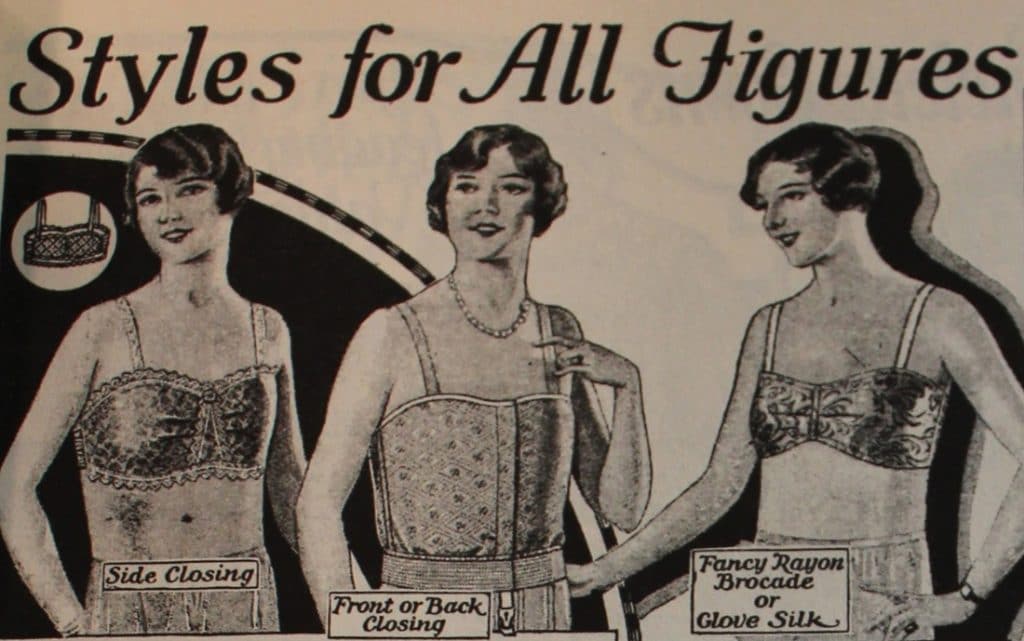
Brassiere was worn for the sole purpose, throughout the roaring twenties, to make the breast area more compact and smaller than reality. The material was made out of cotton. For women with larger cup sizes, it was slightly more difficult as it provided no support in the breast area.
- Cotton brassieres were usually worn for both their durable nature and thickness. Quality depended on the price factor. Cotton was easy to repair and replace if damage occurs.
Simple brassieres were a simple piece of fabric with shoulder straps. There were slightly more supportive versions, by incorporating elastic. As the function of brassieres throughout the roaring twenties was to flatten and not enhance the breast area, some girls had detrimental effects on the general area of their breasts. Many women mentioned that their breasts never came back to the original shape. They were flattened and did not look pleasing. As the end of the decade slowly approached, more women started wearing bras with cups that can help protect and support the breast area where possible. This helped to support women’s breast area and served the functional state of bras.
KNICKERS OR BLOOMERS
Underwears are called knickers or bloomers in the roaring twenties. The popular materials were silk and cotton. There were many popular colors of knickers such as orange, peach, violet, jade green, blue, etc.
Camisole and knickers were popular for women who preferred garments in one set. You can either get it together or separately but some women preferred wearing it altogether.
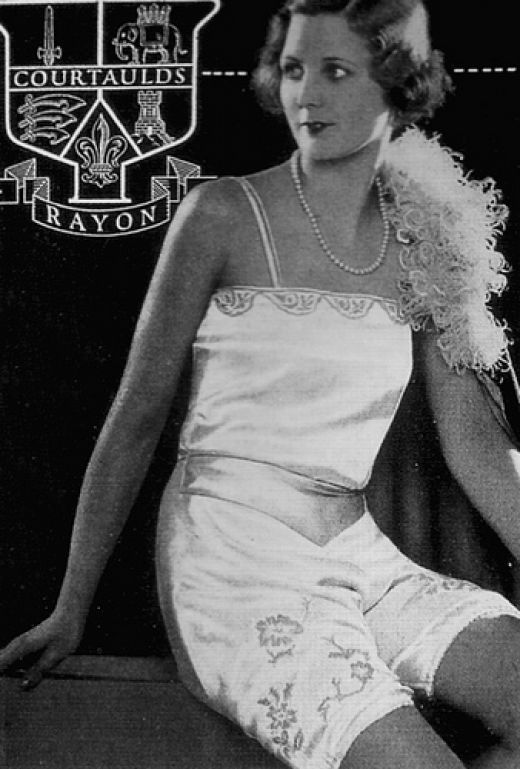
STEP-INS DRAWERS
Silk bloomers were baggier and longer and less fitting than knickers – usually reached mid-thigh or knee area.
Corsets could be worn over them with a slip over the corset. This was similar to modern-day romper pajamas – they had similar function and purpose and most importantly, style.
DRESS SLIPS
The dress slips served a similar purpose as they do now. They were a necessity under light dresses to keep the dress fabric from attaching to the body. Clips or pins were also incorporated at the sides to slip the dresses.
Petticoats were also worn in the early twenties but women slowly stopped wearing petticoats. The petticoat, however, made an ultimate comeback nearing the end of the era.
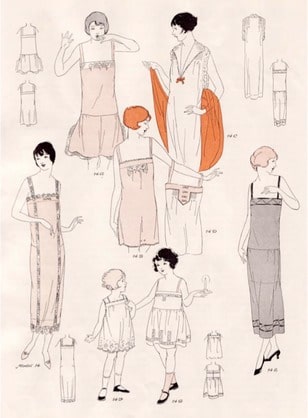
LINGERIE TIPS FOR TODAY
Bra– A sports bra will give you a flattening effect. Some women also incorporated creative methods to help flatten their bust size. For instance, using tape to help flatten the bust area. However, make sure to not make it too tight.
Slip– Any loose dress will work – it has to be not tightly fitting to the skin. It has to flow Dress slips served a similar purpose as they do now. They were a necessity under light dresses to keep the dress fabric from attaching to the body. Clips or pins were also incorporated at the sides to slip the dresses.
Corset/ girdle–
The ideal corset was not designed to give a woman more curves but to flatten the front and backside – this general perception of corsets has certainly changed over time. Lacing and elastic panels helped shape the figure and boning kept the torso flat. The question of whether corsets were comfortable remains an important question even today. For women who grew up wearing corsets, they found it comfortable as they were probably used to it. They provided the support as back brace today – elastic panels increased comfort and provided more flexibility in movement. It provided more leeway for motion, hence, increasing the general levels of comfort.
Slip– Dress slips served a similar purpose as they do now. They were a necessity under light dresses to keep the dress fabric from attaching to the body. Clips or pins were also incorporated at the sides to slip the dresses.
Bloomers/ knickers– Cami-bloomers, combining camisole and knickers were popular for women who preferred garments in one set. They were also sold separately but some women preferred wearing it altogether.
CONCLUSION
We have discussed that the style of lingeries has undoubtedly changed over the years. From the beginning, lingerie was associated with wearing up to 11 layers. By the end of the roaring twenties, women could only wear a brassiere with a teddy and be sufficiently dressed in lingerie. What an interesting revelation! Back in the early twenties, women would wear a corset, corset covers, petticoats underneath her dress paired with a nightgown. There were many layers to consider when putting on a nightgown.
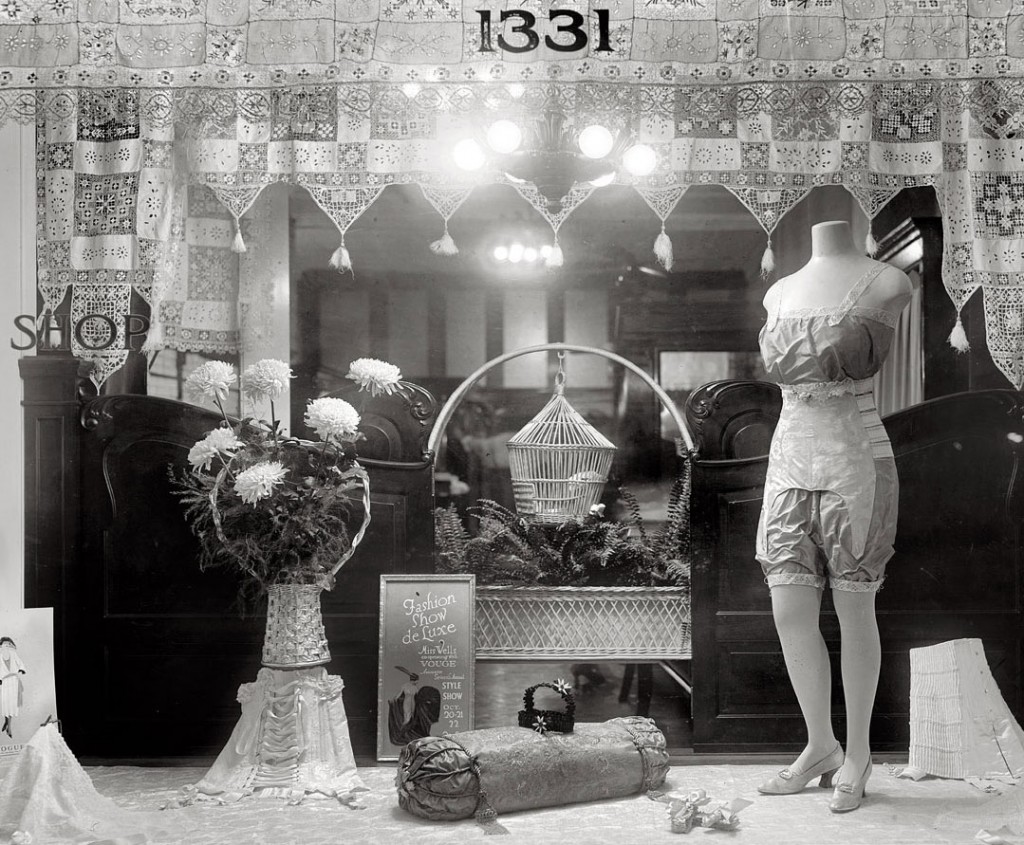
As the general sales of corset declined, younger women chose lighter brassiere-corset. It was more comfortable than the traditional corsets – elastic panels increased comfort and provided more flexibility in movement. It provided more leeway for motion, hence, increasing the general levels of comfort. The effect was not to reduce or tighten as it served the purpose of creating a tube shape with the little definition in the waist or bust.
Simple brassieres were a simple piece of fabric with shoulder straps. More supportive versions of the brassieres were made of elastic strips that accentuated the deep V style. As the function of brassieres throughout the roaring twenties was to flatten and not enhance the breast area, some girls had negative effects on their breast shapes. Many women mentioned that their breasts never came back to the previous perky life. They were flattened and did not look pleasing. As the end of the decade slowly approached, more women began to wear bras with cups that were designed to lift and separate the cleavage. This helped to support women’s breast area and served the functional state of bras.
We have also discussed that woven cotton or silk bloomers were baggier and longer than knickers – usually reached mid-thigh or knee area. Drawers and bloomers were basically the same with the difference being that drawers have a wide leg opening and bloomers have an elastic cuffed leg. The dress slips served a similar purpose as they do now. They were a necessity under light dresses to keep the dress fabric from attaching to the body. Clips or pins were also incorporated at the sides to slip the dresses.
Corsets were still worn in the 1920s and throughout the few decades as follows. Interestingly, the majority of women still wear corsets today. Older women preferred the traditional laced-up corsets. Curvy women also wore them more than thin women – it helps to accentuate their curves and enhances the shape of their bodies. Between the roaring twenties, however, corset sales declined massively but corset makers adapted to changing needs. 1920s women embraced their carefree and lively manner which is easily represented by their choice of clothing. As a result, this enabled them to pursue new identities and opened new doors for the rise of women’s rights.

